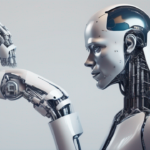In the modern world, where artificial intelligence (AI) is becoming more and more integrated into our daily lives, fears are often expressed that AI systems will become autonomous and surpass humans. However, a closer examination of the current state of AI technology suggests that these concerns are far from realized.
The AI systems we interact with on a daily basis are often examples of “narrow AI”. These systems are specialized, excelling at tasks like recommending your next Netflix movie, optimizing your travel route, or even more complex tasks like writing essays or generating images. Despite their capabilities, they operate within strict limitations and cannot exceed designated limits.
Even the most advanced AI tools, capable of creating content in multiple modalities, essentially make mathematical predictions based on large data sets. They don't really “understand” the content they generate or the world around them. They operate within a predefined framework and cannot think for themselves, learn beyond their programming, or develop any form of intention.
The idea of Artificial General Intelligence (AGI), an AI capable of understanding, learning and applying knowledge across a wide spectrum of tasks like a human, remains a distant goal. Today's most sophisticated AIs struggle with tasks that a human child performs intuitively. The transition from narrow AI to AGI is not just about incremental improvements, but requires fundamental advances in how AI learns and interprets the world.
Current AI systems require large amounts of data to learn and operate effectively, which is one of the major bottlenecks in AI development. Unlike humans, who can learn from a few examples or even a single experience, AI systems need thousands or even millions of data points to master even simple tasks. This difference highlights a fundamental gap in how humans and machines process information.
As AI continues to evolve and become more deeply integrated into our lives and industries, the infrastructure around its development is also maturing. The technology community is becoming more proficient in implementing ethical and safety guidelines, but these measures must evolve with the rapid developments in AI to ensure robust, secure and controlled operations. By proactively adapting regulations, we can anticipate and mitigate potential risks and unintended consequences, ensuring AI's role as a powerful tool for positive advancement rather than a threat.
In conclusion, AI is here to assist and augment human capabilities, not to replace them. At the moment, the world is very much in human hands.

